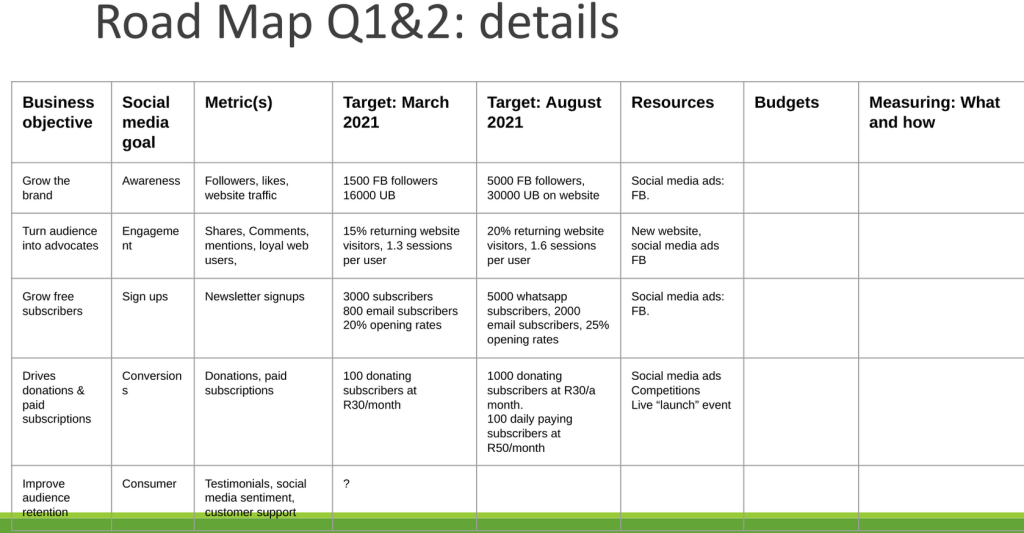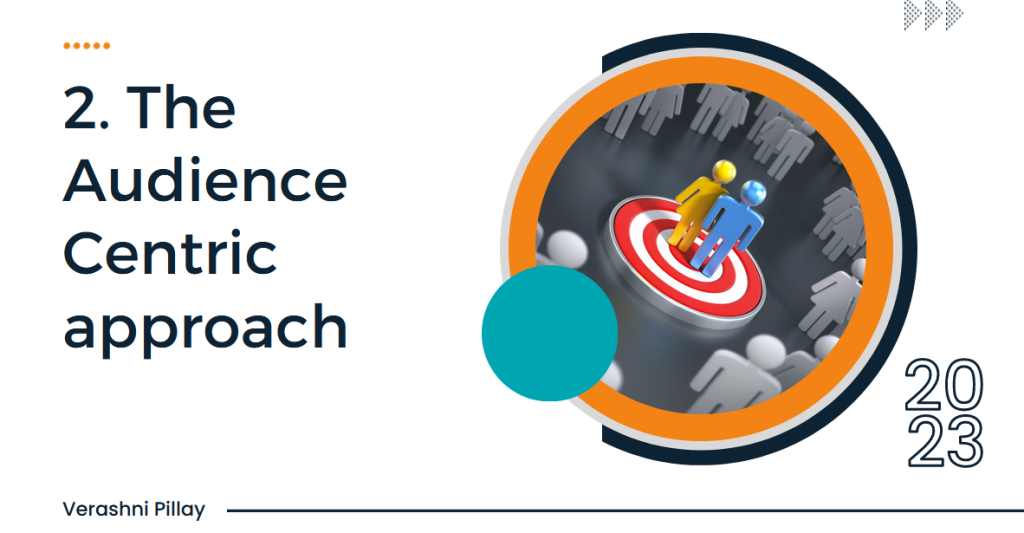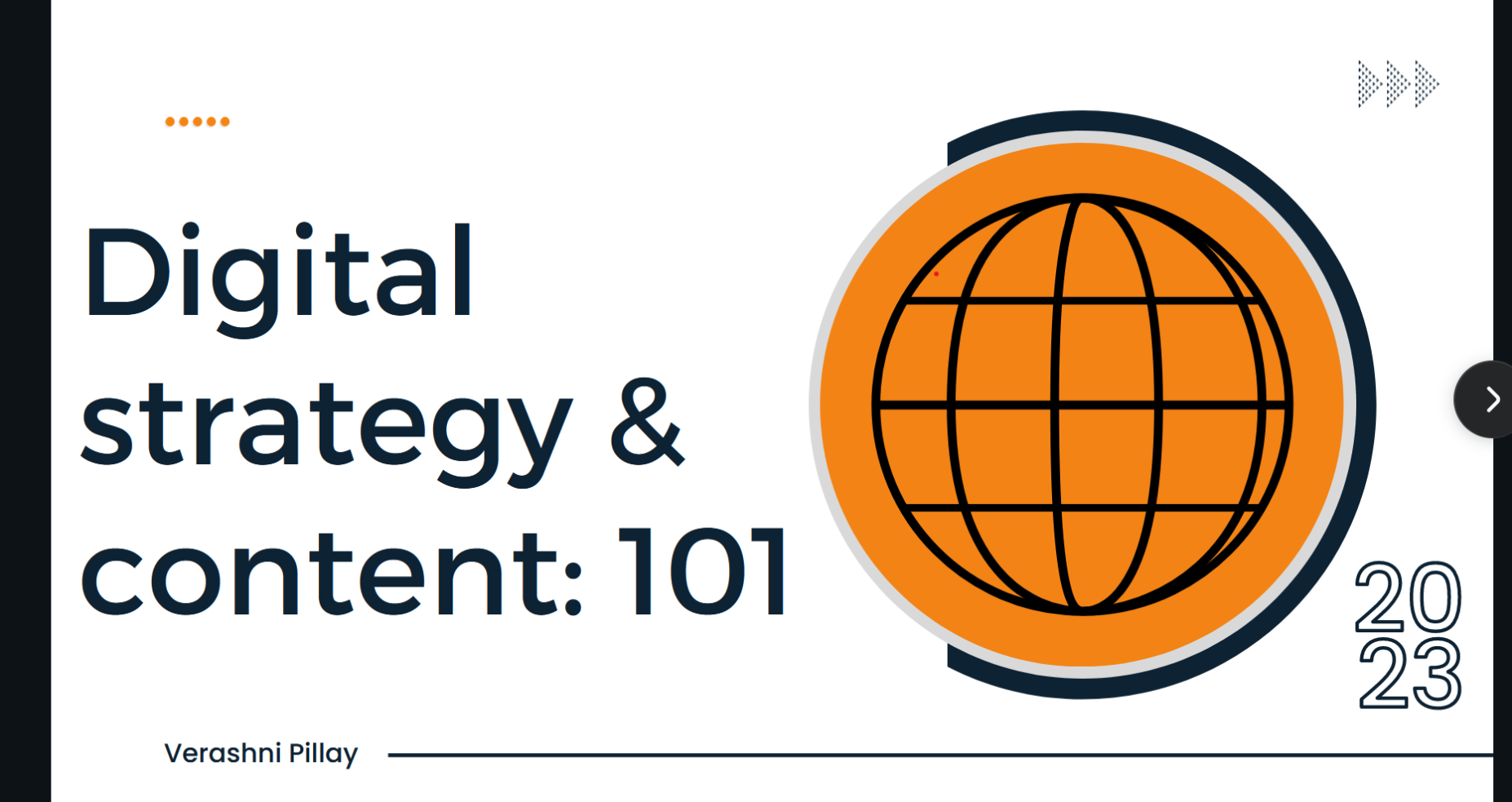First be clear on who you are and what you want to achieve, advised Verashni Pillay, founder of explain.co.za, during a virtual training on Digital Strategy 101, attended by over 40 participants from SAMIP, NAMIP and the regional cohort.
The two-hour session was specifically aimed at small newsrooms without a lot of resources and based on Pillay’s extensive media and start-up experience. While it is important to be realistic about what you are able to achieve, no budget is too small or newsroom too constrained to not have an effective strategy.
“Focus on what you want to do, write it down in a simple way and make sure all your staff are onboard with your vision – and make it your north star!”

A digital content strategy blueprint
Beyond setting out your newsroom’s broad vision, mission and goals, Pillay outlined how to develop a detailed digital content plan putting down your ideas in an orderly, actionable way. She showed an example of a two-week content schedule broken down in a table with fields for platform, audience, purpose, content pillars and tone.
It is important to clarify your content pillars – no more than three editorial priority areas – then consider your audience and your purpose. The digital world has multiple channels and you need to adapt your tone and messaging depending on the platform – more formal on Linked-in, more personal and visual on Instagram. Analytics and online resources can be used to see what has worked and when to post.
How do you measure success?
Focus on just a few business objectives and work out what metrics you can use to measure your progress. Think of what success will look like – is it gaining subscribers or bringing in new clients – then plot on a table with benchmarks to be clear what you are aiming to achieve over what period. Not all metrics are equally useful, so measure what matters, what gives you the most insight about whether you are reaching your objectives – website traffic, engagement and shares or sign-ups?

The audience-centric approach
Creating an audience persona or avatar can be useful to help you clarify your primary audience as you can keep this person in mind when creating your diary, choosing your topics, angle, tone, headline, images and writing style. Workshop attendees were tasked with developing an audience avatar bio, deciding on a name, age, location, occupation, personality, interests, challenges and hopes. The reason to spend time thinking about your audience is because you ultimately want to create a community of more engaged readers – these are also the people most likely to pay for your products.
Free tools for newsrooms on a budget
Pillay offered basic guidance on creating great digital-first content using free tools like Canva and Animoto. It is simple to use Canva’s existing templates and stitch together a few elements and animate to create a professional-looking social media video, which research shows is likely to attract more engagement than static media. Animoto is a great resource for repurposing legacy content for digital. The tool is particularly useful for repackaging long articles into a quick video format for your audience on social media. Pillay also outlined the template she uses to enable interns to repurpose broadcast content into a short article.
Verashni Pillay’s top tips:
- Codify all your company information, editorial policy and style guide and store it in a central repository
- Clarify your content pillars, your target audience and your tone
- Choose metrics that matter and collect the data into a spreadsheet
- Decide what success will look like and plot it on a timeline
- Repurpose your content to suit different platforms
- Keep your north star but adapt your strategy depending on the market.

